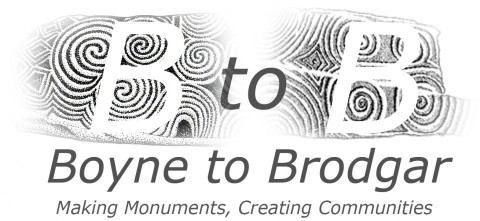It is clear that, having been established, these two Early Neolithic monumental traditions flourished and changed over the generations in Ireland and Britain. In Scotland, for example, the practice of constructing passage tombs appears to have spread northwards and north-eastwards from the west of Scotland, with variable regional trajectories emerging (e.g. in Shetland: Sheridan 2014b), while a testable hypothesis for the evolution of the passage tomb tradition in Ireland was proposed as long ago as 1986 (Sheridan 1986; cf. Hensey 2015). With the non-funerary tradition of the ‘Carinated Bowl Neolithic’, as suggested above, a major development was the translation into stone of the ‘mortuary structure plus rectangular or trapezoidal mound’ format, with the resulting monuments taking different forms in different areas. Interaction between these areas is clear, for example, from the close similarity between Cairnholy 2, Dumfries and Galloway – an early version of the ‘timber to stone’ translation process – and the simpler of the two chamber tombs at King Orry’s Grave on the Isle of Man (Henshall 1978), and from the ‘cousinly’ relationship between Clyde cairns in south-west Scotland and court tombs in the north of Ireland (plus cognate monuments on Man). We also know that other kinds of monument were constructed over the succeeding centuries, such as non-megalithic funerary enclosures and cursus monuments.
But we need to know far more about the nature and chronology of these regional trajectories and the factors underlying the new developments. Accordingly, the following major questions can be posed:
- How, when and why did the monumental repertoire change in different regions over the course of the fourth millennium? (Developments from the late fourth and third millennia will be dealt with below.) More specifically, for example:
- When did the earliest ‘translations into stone’ of the non-megalithic ‘Carinated Bowl Neolithic’ monuments occur in different regions, and what accounts for the specific form that they took (i.e. simple rectangular stone chambers under round mounds in south-west Scotland (e.g. Mid-Gleniron 1, Dumfries and Galloway); Clyde cairns and court tombs; and, arguably, portal tombs)? The small amount of existing evidence suggests that this process of regional diversification occurred relatively quickly; what was the tempo in different regions?
- What is the specific trajectory of passage tomb development in different regions? Are we dealing with a simple case of aggrandisement over time, or is the story more complicated and varied (as suggested by Hensey 2015 and Sheridan 2014b? And where do the Bargrennan-type ‘passage tombs’ of south-west Scotland fit into the sequence?
- How did the monument builders and users of the two main traditions relate to each other? When were the ‘hybrid’ monuments – the transeptal court tombs of north-west Ireland, and the Clyde cairn/passage tomb hybrid at Clettraval, North Uist – built and what does this merging of traditions mean in terms of identity and interaction?
- When did cursus monuments begin to be constructed, and cease to be used, in Ireland? Did they start as early as the second quarter of the fourth millennium, as seems to be the case in Scotland (Thomas 2007)? Were they used in the same way in Ireland as in Britain? Are there any equivalents in Ireland for the shorter, rectangular timber mortuary enclosures as seen, for example, at Inchtuthil in Scotland?
- Is there any evidence for the use of timber or stone circles, individual or grouped standing stones, or the circular embanked monuments normally referred to as ‘henges’ (or, in Ireland, ‘embanked enclosures’) prior to 3000 BC in Ireland and Scotland?
- How (if at all) does the trajectory of Neolithic monument building in the Isle of Man compare with that in neighbouring regions? For example, can the so-called ‘stone circle’ on Meayll Hill be regarded as a local variant of the ‘translation into stone of the timber mortuary structure’ phenomenon as seen elsewhere on the island at King Orry’s Grave? Our current understanding of Neolithic monumentality, and indeed of many other areas of Neolithic life, in the Isle of Man has many gaps (Bayliss et al. 2011).

